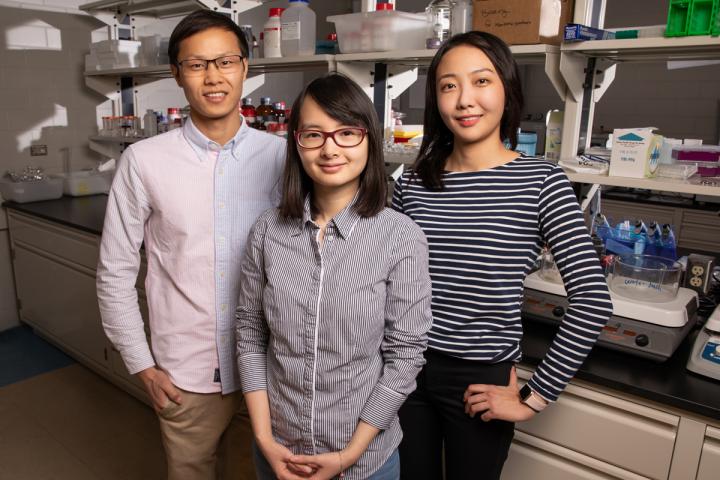
Credit: Photo by L. Brian Stauffer
CHAMPAIGN, Ill. — Self-assembling synthetic materials come together when tiny, uniform building blocks interact and form a structure. However, nature lets materials like proteins of varying size and shape assemble, allowing for complex architectures that can handle multiple tasks.
University of Illinois engineers took a closer look at how nonuniform synthetic particles assemble and were surprised to find that it happens in multiples phases, opening the door for new reconfigurable materials for use in technologies such as solar cells and catalysis.
The findings are reported in the journal Nature Communications.
“Traditional self-assembly can be thought of like a grocery store stacking apples for a display in the produce section,” said Qian Chen, a professor of materials science and engineering and lead author of the new study. “They would need to work with similarly sized and shaped apples – or particles in the case of self-assembly – to make the structure sturdy.”
In the new study, Chen’s group observed the behavior of microscale silver plates of varied size and nanoscale thickness in liquids. Because the particles used in self-assembling materials are so small, they behave like atoms and molecules, which allow researchers to use classical chemistry and physics theories to understand their behavior, the researchers said.
The nonuniform particles repel and attract according to laws of nature in plain, deionized water. However, when the researchers add salt to the water, changing electrostatic forces trigger a multistep assembly process. The nonuniform particles begin to assemble to form columns of stacked silver plates and further assemble into increasingly complex, ordered 3D hexagonal lattices, the team found.
“We can actually witness the particles assemble in this hierarchy using a light microscope,” said Binbin Luo, a materials science and engineering graduate student and study co-author. “This way, we can track particle motions one by one and study the assembly dynamics in real time.”
“The findings of this study may allow for the development of reconfigurable self-assembly materials,” said Ahyoung Kim, a materials science and engineering graduate student and study co-author. “These materials can change from one type of solid crystal to another type with different properties for a variety of applications.”
“Another benefit of this finding is that it can be generalized to other types of systems,” Chen said. “If you have another type of nanoparticle, be it magnetic or semiconducting, this hierarchal assembly principal still applies, allowing for even more types of reconfigurable materials.”
###
Graduate students John W. Smith and Zihao Ou, former postdoctoral researcher Juyeong Kim, and undergraduate student Zixuan Wu also contributed to this study.
The National Science Foundation supported this research.
Editor’s notes:
To reach Qian Chen, call 217-300-1137; email [email protected].
The paper “Hierarchical self-assembly of 3D lattices from polydisperse anisometric colloids” is available from the U. of I. News Bureau. DOI: 10.1038/s41467-019-09787-6
Media Contact
Lois Yoksoulian
[email protected]
Original Source
https:/
Related Journal Article
http://dx.




